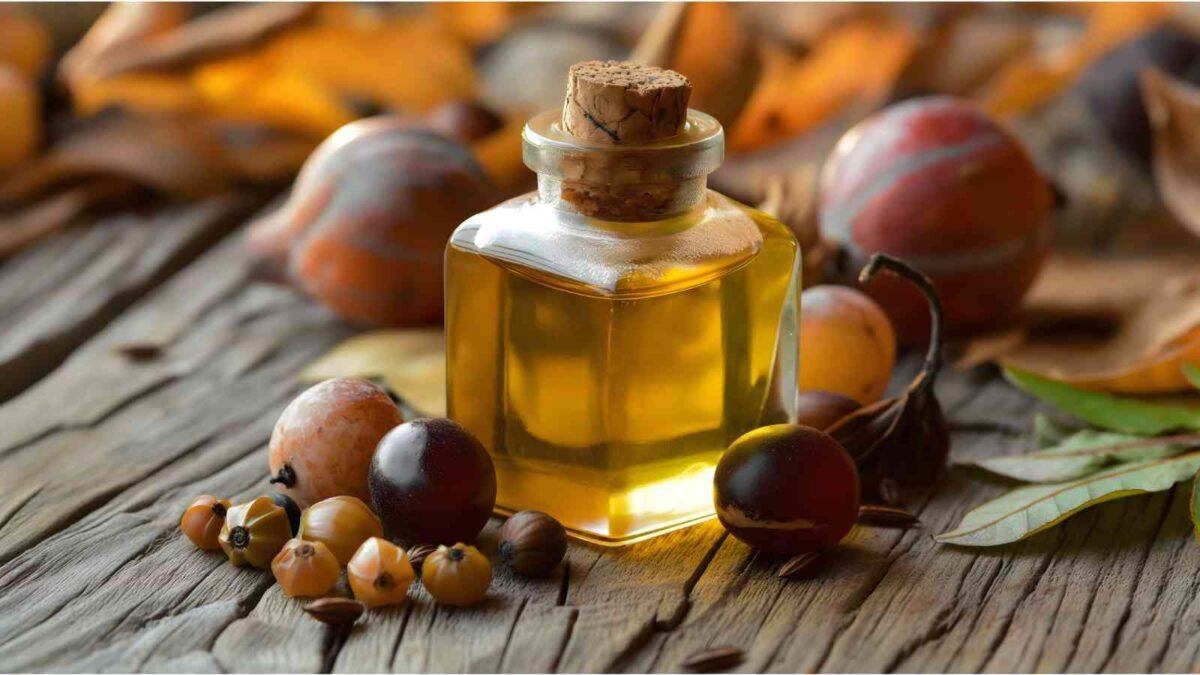Glycolic acid peeling is popular for improving skin texture and reducing fine lines but may cause redness, irritation, and increased sunlight sensitivity. This has prompted many to seek natural alternatives with similar benefits but fewer side effects.
This article will explore 8 effective Natural Alternatives to Glycolic Acid for Glowing Skin
Table of Contents
Toggle
Understanding Glycolic Acid Peeling
Glycolic acid peeling is a form of chemical exfoliation that uses glycolic acid, a type of alpha hydroxy acid (AHA) derived from sugar cane. This method works by breaking down the bonds between dead skin cells, making it easier to remove them and reveal the fresher, smoother skin beneath.
Benefits of Glycolic Acid for the Skin
Glycolic acid offers several skin benefits:
- Improves Texture: Smooths out rough patches.
- Reduces Fine Lines: Minimizes the appearance of wrinkles.
- Evens Skin Tone: Helps fade hyperpigmentation and dark spots.
Potential Side Effects and Concerns
While glycolic acid can be effective, it’s not without risks. Some potential side effects include:
- Redness: Temporary redness after the peel.
- Irritation: Possible burning or stinging sensations.
- Sun Sensitivity: Increased risk of sunburn due to heightened skin sensitivity.
Understanding these aspects of glycolic acid peeling helps in making an informed decision about whether to choose chemical exfoliation or explore natural alternatives.
Why Choose Natural Alternatives to Glycolic Acid for Glowing Skin?
Opting for natural skincare methods can offer several advantages:
- Reduced Irritation: Natural ingredients tend to be gentler on the skin, making them less likely to cause irritation or allergic reactions. This is a significant benefit, especially for those with sensitive skin.
- Gentle Exfoliation: Many natural exfoliants provide a mild yet effective way to remove dead skin cells and promote cell turnover. For instance, ingredients like oatmeal and honey not only exfoliate but also nourish the skin.
- Skin Health: Natural alternatives often contain beneficial nutrients that support overall skin health. Ingredients like pumpkin and aloe vera are rich in vitamins and antioxidants, which can help improve your complexion and reduce signs of aging.
Comparing natural exfoliants with chemical peels reveals that while both can achieve a brighter complexion and smoother texture, natural options do so without harsh side effects. Chemical peels like glycolic acid can lead to redness, irritation, and increased sensitivity to sunlight. In contrast, natural ingredients are typically safer for long-term use.
For those with sensitive skin, safety considerations are crucial. Natural exfoliants usually have a lower risk of adverse reactions. However, it’s essential to patch-test any new ingredient to ensure it suits your skin type.
Choosing natural alternatives allows you to maintain healthy, glowing skin without relying on harsh chemicals.
8 Natural Alternatives to Glycolic Acid Peeling for Glowing Skin
1. Glycolic Acid Natural Facial Peel
Natural exfoliants offer a gentler approach to achieving glowing skin. One effective natural alternative to glycolic acid peeling is a homemade peel using ingredients like yogurt, honey, and lemon juice.
Ingredients Needed
- Yogurt: Contains lactic acid which helps in lightening spots and fine lines while providing moisture.
- Honey: Known for its antibacterial properties and ability to retain moisture, it helps in soothing and nourishing the skin.
- Lemon Juice: Rich in vitamin C, it aids in brightening the skin and reducing dark spots.
Preparation Steps
- Combine Ingredients:
- Take 2 tablespoons of plain yogurt.
- Add 1 tablespoon of honey.
- Mix in 1 teaspoon of fresh lemon juice.
- Mix Thoroughly:
- Stir the mixture until it becomes a smooth paste.
- Application:
- Ensure your face is clean and dry before applying the peel.
- Using clean fingers or a brush, apply the mixture evenly across your face, avoiding the eyes.
- Let It Sit:
- Leave the peel on for about 10-15 minutes.
- Rinse Off:
- Gently wash your face with lukewarm water and pat dry with a soft towel.
Tips on Application Frequency and Duration
- For optimal results, use this homemade peel once a week.
- If you have sensitive skin, start by leaving the peel on for only 5 minutes and gradually increase based on your skin’s tolerance.
- Always perform a patch test before applying any new product to your face to ensure there are no adverse reactions.
Using natural alternatives like this glycolic acid natural facial peel can provide similar benefits to chemical peels without causing irritation or sensitivity. The combination of yogurt, honey, and lemon juice not only exfoliates but also nourishes your skin, leaving it brighter and smoother with regular use.
2. Pumpkin Face Peel
Exploring natural exfoliants can lead to glowing skin without the harsh effects of chemicals. The pumpkin peel is a prime example among the Natural Alternatives to Glycolic Acid Peeling.
Nutritional Benefits of Pumpkin for Skin:
- High in Vitamins A and C: These vitamins promote cell turnover and improve overall complexion.
- Antioxidant Properties: Helps in fighting free radicals, reducing signs of aging, and maintaining youthful skin.
How to Prepare a Pumpkin Face Peel:
Ingredients:
- Fresh pumpkin puree
- Honey
- Turmeric powder (optional)
Steps:
- Blend Ingredients: Mix 2 tablespoons of fresh pumpkin puree with 1 tablespoon of honey. For added benefits, include a pinch of turmeric powder.
- Application: Apply the mixture evenly to your face, avoiding the eye area.
- Wait Time: Leave it on for about 15-20 minutes.
- Rinse: Use lukewarm water to rinse off the peel gently.
Expected Outcomes:
- Even Skin Tone: Regular use can lead to a more even complexion.
- Reduced Signs of Aging: The vitamins and antioxidants help diminish fine lines and wrinkles.
This homemade peel acts as a gentle exfoliator, making it an excellent addition to your skincare routine for achieving radiant skin.
3. Baking Soda, Lemon, and Pineapple Peel
Natural exfoliants offer a gentle yet effective way to achieve glowing skin. The combination of baking soda, lemon, and pineapple serves as a remarkable natural alternative to glycolic acid peeling.
Ingredients and Their Roles:
- Baking Soda: Acts as a gentle abrasive, helping to remove dead skin cells from the surface layer of the skin.
- Lemon Juice: Known for its brightening effect due to its high vitamin C content, it also helps in reducing dark spots.
- Pineapple: Contains enzymes like bromelain that break down proteins, providing deep cleansing benefits and unclogging pores.
Preparation Instructions:
You’ll need:
- 1 tablespoon baking soda
- 2 teaspoons fresh lemon juice
- 2 tablespoons pineapple puree
Steps:
- Combine the baking soda and pineapple puree in a small bowl.
- Gradually add the lemon juice while stirring until you achieve a smooth paste.
- Apply the mixture evenly on your face, avoiding the eye area.
- Leave it on for about 10-15 minutes before gently rinsing off with lukewarm water.
Effectiveness:
This homemade peel is particularly effective at sloughing off dead skin cells and clearing out clogged pores. Regular use can lead to a brighter complexion and smoother texture without causing irritation.
Explore these natural alternatives to glycolic acid peeling for radiant skin.
4. Apple Cider Vinegar Homemade Peel
Apple cider vinegar (ACV) is one of the best natural exfoliants because it helps balance your skin’s pH levels. It also controls excess oil, making it great for getting glowing skin. This homemade peel can gently exfoliate and is a fantastic addition to your skincare routine.
Ingredients:
- 2 tablespoons apple cider vinegar
- 1/2 cup applesauce or crushed apple slices
- 1 tablespoon aloe vera gel or chamomile tea
Preparation Steps:
- Mix the applesauce or crushed apple slices with the apple cider vinegar in a bowl.
- Add the aloe vera gel or chamomile tea to the mixture, ensuring all ingredients are well-combined.
Application Tips:
- Method: Use a cotton pad to apply the mixture evenly across your face, avoiding the eye area.
- Frequency: Apply this peel once a week to avoid over-exfoliating and to cater to individual tolerance levels.
Benefits: Regular use of this ACV peel can help balance your skin’s pH, manage oil production, and promote a more even complexion. The addition of apples offers extra nourishment while aloe vera or chamomile provides soothing effects.
This natural alternative can help you achieve radiant skin without relying on harsh chemicals like glycolic acid. To further enhance your skincare routine, consider incorporating some of these DIY natural face masks or explore homemade toners that can complement this peel for even better results.
5. Tomato and Aloe Vera Face Peel
Exploring natural alternatives to glycolic acid peeling can lead you to the incredible benefits of tomatoes for your skin. Tomatoes are rich in lycopene, a powerful antioxidant that helps reduce dark spots and improve overall skin tone uniformity.
Combining tomato pulp with aloe vera gel enhances the formula, offering both exfoliation and hydration. Aloe vera is well-known for its soothing properties, making this combination ideal for a gentle yet effective homemade peel.
Preparation Steps:
- Ingredients:
- 1 ripe tomato
- 2 tablespoons of aloe vera gel (fresh or store-bought)
- Instructions:
- Choose a ripe tomato from a local market or grocery store.
- Blend the tomato into a smooth pulp.
- Mix the tomato pulp with aloe vera gel until well combined.
- Apply the mixture evenly on your face, avoiding the eye area.
- Leave it on for 15-20 minutes.
- Rinse off with lukewarm water and pat dry.
Application Tips:
- Use this peel once or twice a week for optimal results.
- Always perform a patch test before full application to ensure no allergic reactions.
This natural exfoliant not only boosts your skin’s radiance but also keeps it hydrated and healthy.
6. Oatmeal Scrub Recipe For Sensitive Skin Types
Selecting the right exfoliant is crucial, especially if you have sensitive skin. Oatmeal stands out as a gentle yet effective natural exfoliant suitable even for reactive skin types. It’s a fantastic option for those looking to achieve glowing skin without irritation.
Creating an Oatmeal Scrub at Home
You only need two ingredients to make an oatmeal scrub:
- Rolled oats: Ground into a fine powder form.
- Warm water: Mixed with the ground oats until it forms a thick paste, resembling traditional porridge.
Here’s how to prepare it:
- Grind Rolled Oats: Use a blender or food processor to grind 1/2 cup of rolled oats into a fine powder.
- Mix with Warm Water: Gradually add warm water to the ground oats until it forms a thick paste.
- Application: Gently massage the paste onto your face using circular motions for about 1-2 minutes.
- Rinse Off: Wash off with lukewarm water and pat your skin dry.
Benefits of Regular Use
Incorporating an oatmeal scrub into your skincare routine can yield several benefits:
- Smoother Texture: Regular use helps to slough off dead skin cells, revealing smoother and softer skin.
- Reduced Redness and Irritation: Oatmeal has anti-inflammatory properties that can calm redness and irritation, making it ideal for sensitive skin types.
- Hydration Boost: The natural saponins in oatmeal help cleanse while retaining moisture, ensuring your skin stays hydrated.
Using this gentle exfoliator regularly can enhance your complexion without the harsh effects associated with chemical peels.
7. Sugar Scrub Recipe With Non-Comedogenic Oils
When looking for natural ways to exfoliate and get glowing skin, sugar scrubs are a great choice because they’re both gentle and effective. Using oils that won’t clog your pores, like jojoba oil or sweet almond oil, helps keep your skin clear while also keeping it hydrated.
Why Non-Comedogenic Oils Matter
It’s important to use oils that won’t clog your pores in homemade scrubs to prevent acne. Jojoba oil and sweet almond oil are great options because they work like the natural oils in your skin, keeping it moisturized without causing any problems.
How to Make a Sugar Scrub
Follow these steps to create an effective sugar scrub at home:
- Ingredients:1 cup granulated sugar
- 1 cup non-comedogenic oil (jojoba or sweet almond)
- Instructions:Mix equal parts of granulated sugar and your chosen oil in a bowl.
- Stir until well combined.
- Transfer the mixture into a glass jar container for storage.
What to Expect
Using this sugar scrub regularly can:
- Boost moisture levels
- Make your skin feel softer
- Bring back smoothness
These benefits work together to give you a glowing complexion after each use, making it a gentle exfoliator that’s good for all kinds of skin.
8. Buttermilk Honey Treatment For Lactic Acid Exfoliation
Buttermilk is great for softening skin texture and controlling oil production. It’s packed with lactic acid, which gently exfoliates and promotes cell turnover for a brighter complexion.
Honey, with its antibacterial properties, boosts the moisturizing effects of this treatment. Mixing raw honey with ground oats or sugar can further nourish and hydrate the skin during application.
How to Apply:
- Mix buttermilk and honey until well combined.
- Apply the mixture to your face.
- Let it sit for 15-20 minutes.
- Rinse off with warm water.
Using this natural exfoliant regularly can lead to softer, smoother skin with improved radiance.
FAQs (Frequently Asked Questions)
What is glycolic acid peeling and how does it work?
Glycolic acid peeling is a form of chemical exfoliation that uses glycolic acid, an alpha hydroxy acid (AHA), to remove dead skin cells from the surface of the skin. This process helps improve skin texture, reduce fine lines, and promote a brighter complexion.
What are the benefits of using natural alternatives to glycolic acid peeling?
Natural alternatives offer several advantages, including being less likely to cause irritation or allergic reactions. They can effectively achieve a brighter complexion and smoother texture while being safer for sensitive skin.
Can you provide an example of a natural alternative to glycolic acid peeling?
One effective natural alternative is a homemade Glycolic Acid Natural Facial Peel made with yogurt, honey, and lemon juice. These ingredients help lighten spots and fine lines while providing nourishment to the skin.
How often should I use natural exfoliants for optimal results?
The frequency of application varies by individual tolerance, but generally, most natural peels can be applied once a week for optimal results. Always start with patch testing and adjust based on your skin’s response.
Are there any safety considerations when using natural exfoliants?
Yes, it’s important to consider your skin type when using natural exfoliants. For those with sensitive or reactive skin, opt for gentler options like oatmeal scrubs and always perform a patch test before full application.
What are some key ingredients in natural exfoliants and their benefits?
Common ingredients include yogurt (for lactic acid), honey (for hydration), lemon juice (for brightening), and pumpkin (rich in vitamins A and C). These ingredients work together to promote cell turnover and improve overall complexion without harsh chemicals.






